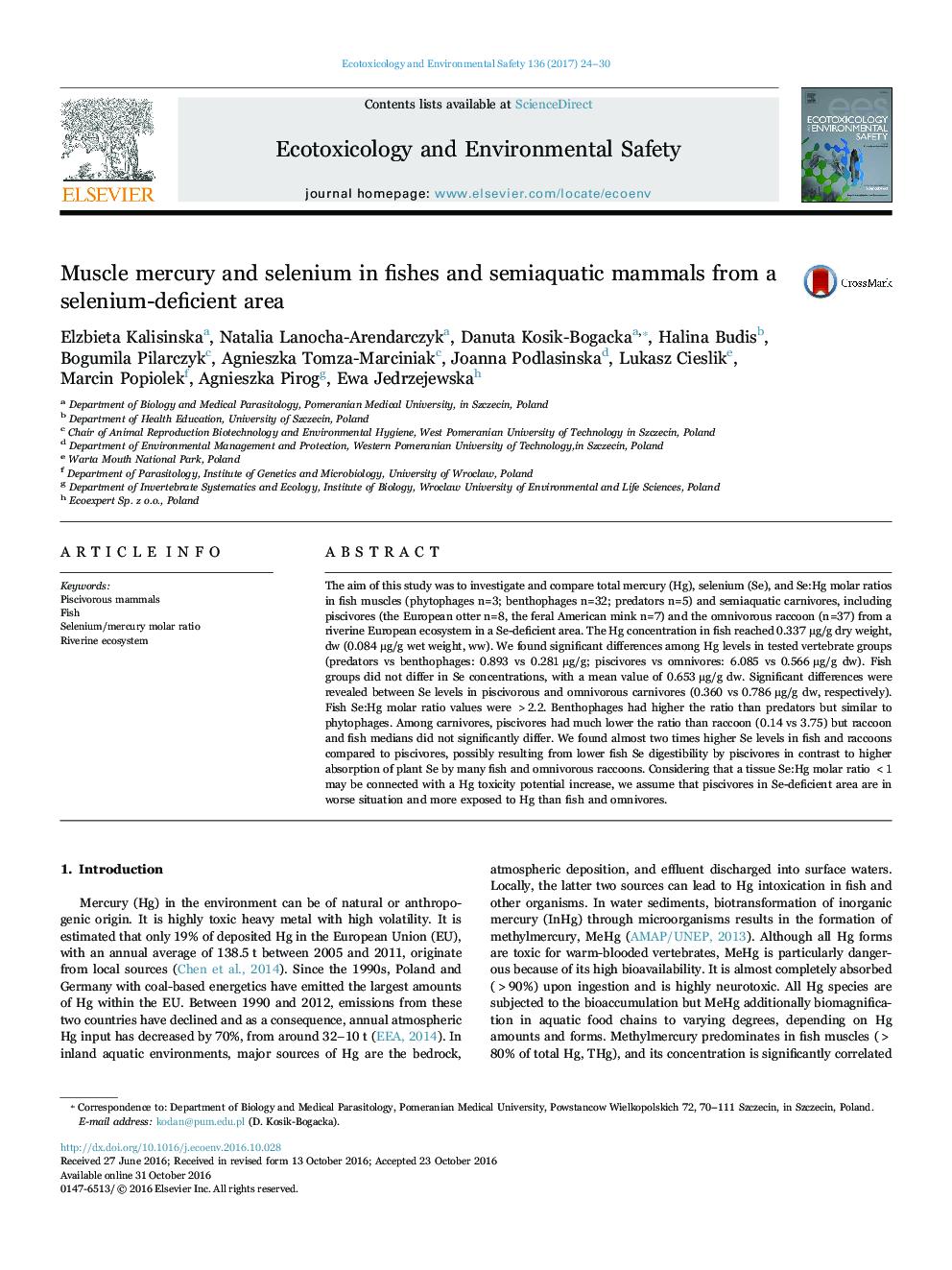| کد مقاله | کد نشریه | سال انتشار | مقاله انگلیسی | نسخه تمام متن |
|---|---|---|---|---|
| 5748129 | 1618928 | 2017 | 7 صفحه PDF | دانلود رایگان |
- The European environmental quality standard for Hg was exceeded in all fish samples.
- Highest Hg and lowest Se levels were detected in piscivorous mammals.
- Se:Hg molar ratios were >2.0 in fish and raccoon but <0.2 in the piscivores.
- Piscivores are more exposed to Hg than fish and omnivore raccoon in the studied area.
The aim of this study was to investigate and compare total mercury (Hg), selenium (Se), and Se:Hg molar ratios in fish muscles (phytophages n=3; benthophages n=32; predators n=5) and semiaquatic carnivores, including piscivores (the European otter n=8, the feral American mink n=7) and the omnivorous raccoon (n=37) from a riverine European ecosystem in a Se-deficient area. The Hg concentration in fish reached 0.337 μg/g dry weight, dw (0.084 μg/g wet weight, ww). We found significant differences among Hg levels in tested vertebrate groups (predators vs benthophages: 0.893 vs 0.281 μg/g; piscivores vs omnivores: 6.085 vs 0.566 μg/g dw). Fish groups did not differ in Se concentrations, with a mean value of 0.653 μg/g dw. Significant differences were revealed between Se levels in piscivorous and omnivorous carnivores (0.360 vs 0.786 μg/g dw, respectively). Fish Se:Hg molar ratio values were >2.2. Benthophages had higher the ratio than predators but similar to phytophages. Among carnivores, piscivores had much lower the ratio than raccoon (0.14 vs 3.75) but raccoon and fish medians did not significantly differ. We found almost two times higher Se levels in fish and raccoons compared to piscivores, possibly resulting from lower fish Se digestibility by piscivores in contrast to higher absorption of plant Se by many fish and omnivorous raccoons. Considering that a tissue Se:Hg molar ratio <1 may be connected with a Hg toxicity potential increase, we assume that piscivores in Se-deficient area are in worse situation and more exposed to Hg than fish and omnivores.
Journal: Ecotoxicology and Environmental Safety - Volume 136, February 2017, Pages 24-30
